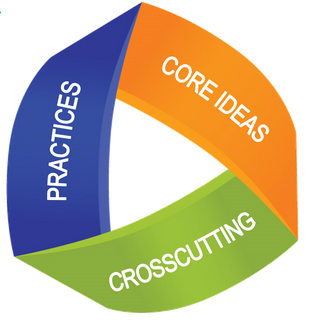A radical idea: Treat teachers like plumbers…
This weekend, while attending a Model United Nations convention with my MUN students, I got to talking with a few colleagues and discussing how people become teachers.
Here are the basic steps to becoming certified as a teacher in California:
- Pay lots of money to get a BA/BS at your favorite university. If you want to be an elementary teacher, you may be able to take some education courses, but if you want to be a secondary teacher, you probably won’t have any room for them since being a “Highly Qualified” teacher means you need a degree in the subject you want to teach.
- Take another year where you pay a university more money, while spending time in university classes in the afternoon or evening and during the day helping a teacher teach her/his class.
- Much of the content of the credential program classes address the academic rationale for specific teaching methods–methods you as the student teachers may or may not be seeing in the school’s classrooms. If you are lucky, a small amount of the content of your credential program classes will actually teach you the tools you will need in the classroom.
- Depending on your “master teacher” and your university’s oversight, on the good end you’ll have a teacher who spends time with you helping to understand the upcoming lessons, and guiding you around the intricacies of the school–while on the other end you’ll have a master teacher who leaves you in the room while s/he goes down to the faculty room and grades papers.
- Next year you’ll likely get a job where you’ll actually get paid–but you’ll likely be working at the toughest schools, and with the toughest classes.
- Work for a few years, and maybe you’ll get an offer at a less tough school, and/or work your way up the seniority ladder so you’ll get the “better” classes (about the same time a new first-year teacher gets hired and they can dump all those tough classes on her/him).
Hmm, let’s compare this to a plumber (adapted from the California Apprenticeship Coordinators Association website):
- No need for college, so already financially ahead.
- In the first year, apprentices do a lot of grunt work, but they are working alongside skilled plumbers, learning from them. They earn about 40-50% of the skilled worker’s wages. After the work day is over, apprentices spend about 144 hours per year in Related Technical Instruction classes (that equals about three to four hours per week).
- Most apprenticeship programs last 3-4 years, so the apprentice spends another 2-3 years learning their skills at the elbow of an expert, as well as some time in class.
So, here are what I see as some of the fundamental flaw in most teacher education/credential/certificate programs:
- Future teachers are asked to study academic rationales for teaching at a time when all they want to know is how to get through the day.
- Novice teachers are thrown in the classroom with little or no support (in California, the Beginning Teacher Support and Assessment (BTSA) program, when used, provides some level of support for novice teachers).
- Novice teachers are generally given the most difficult classes to teach.
What’s the solution? My radical proposal:
Let’s go with the apprenticeship model. While teachers generally need to have a BA/BS to have enough background to teach their subject, they don’t need education courses that focus on why to teach a certain way, they need help with how to teach it that way.
- Put teachers in the classroom for two years working alongside another teacher. This will not only help the apprentice teacher, but it will help the experienced teacher. Pay the apprentice less than the full salary, but pay them.
- During these first couple years, teacher education classes should focus on the basics of teaching: Moving from “How do I best describe a spit infinitive?” or “What’s the best software to show a molecule in three dimensions?” in the first year to “Why does this method work, and what are other alternatives should I be able to pull out when a student doesn’t get it from the first example?” in the second year.
- Years three and four: Upon certification by the master teacher and university professors that the apprentice is ready to move on, the apprentice can take on a classroom by her/himself. Weekly meetings to go over planning and assessments with a master teacher in the third year, moving to less frequent during the fourth year. Teacher earns full salary these years.
- Years five and six: The teacher now returns to night or summer school, where s/he takes education courses that focus on educational research, and the “why” of the techniques s/he has been implementing the past few years (and thus is very familiar with).
- After successful completion of university coursework, this teacher can proudly wear the title of Teacher.
Unfortunately, this would be an expensive proposition, and such a radical change that the powers that be will resist it. But that’s where the fight comes in. If it’s good enough for the person who’s going to fix your toilet, shouldn’t it be good enough for the person who teaches your kids?
http://www.btsa.ca.gov/


